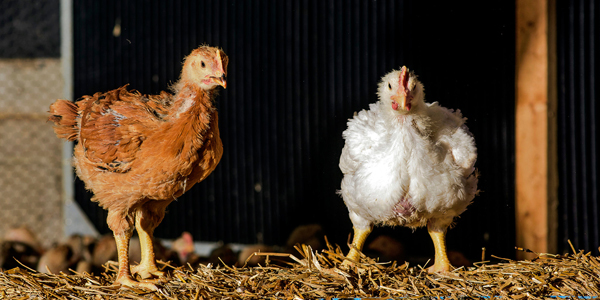Thanks to PSPA member Bettsy Mosimann for sharing this great story by Stephanie Strommay from the NY Times.
SALISBURY, Md. — The chickens in one pen were, for the most part, doing what they usually do toward the end of their lives on a factory farm: resting on the floor, attacking the feeding pan, getting big fast.
But in the next pen over, smaller, leaner birds of the same age ran around, raising a ruckus as they climbed on haystacks, perched on roosts and gave themselves dirt baths.
“We’re going to have to come up with a sturdier water line,” said Dr. Bruce Stewart-Brown, a veterinarian and senior vice president of Perdue Farms, as he watched two of them swing the tube that supplies water to the pen.
The frisky birds and their more sedentary neighbors here in a barn on the Delmarva Peninsula are part of an experiment that could help change the way Americans eat, and think about, poultry.
Perdue Farms, one of the country’s largest chicken producers, has been raising what are known as slow-growth chickens side by side with the breeds that have made the company so successful. The new birds, a variety known as Redbro, take 25 percent longer, on average, to mature than their conventional cousins, and so are more expensive to raise.
Perdue is trying to find just the right slow-growth breed, and it has a strong incentive: A fast-growing cohort of companies that buy vast quantities of poultry, including Whole Foods Market and Panera Bread, are demanding meat from slow-growth chickens, contending that giving birds more time to grow before slaughter will give them a healthier, happier life — and produce better-tasting meat.
“We want to get back to a place where people don’t have to put a marinade on their chicken to make it taste like something,” said Theo Weening, who oversees meat purchasing for Whole Foods and recalls how his mother bought chicken by breed in the Netherlands, where he grew up.
Mr. Weening is realistic, though. “We have to figure out how can we make this happen so we’re not ending up with a chicken nobody can afford,” he said.
That is the big challenge for chicken producers. Dr. Stewart-Brown, of Perdue, said it cost about 30 percent more to feed the Redbro birds; the expense can run even higher for other slow-growth breeds, some of which can take as much as twice as long to reach full weight as conventional birds.

